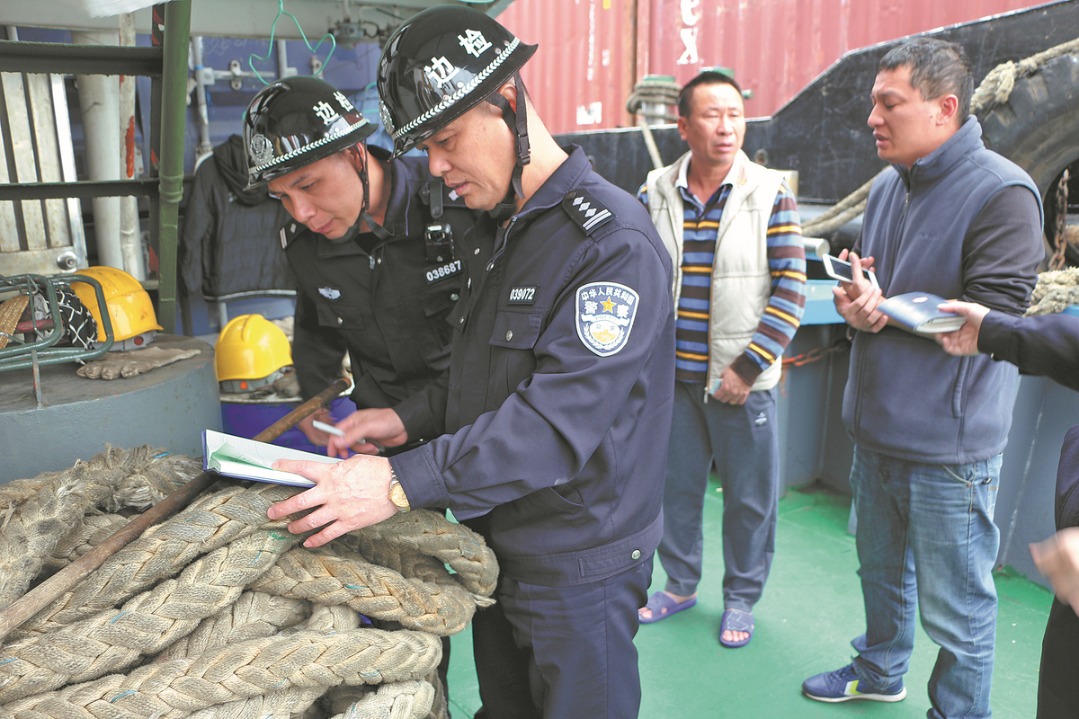The modern world delivered by drone

Technology is enabling remote and difficult-to-access areas to share in the modernization and prosperity enjoyed by the rest of China
Since drones' commercial inception several years ago, China has come to dominate the worldwide drone industry, with domestic producers such as DJI making a record $2.7 billion (2.2 billion euros; £1.9 billion) in revenue last year. The rest of the world is hungry for drones, with nearly 70 percent of sales being made abroad in countries such as the United Kingdom and the United States. It was therefore only a matter of time before this widespread technology - first nurtured by the military nearly a century ago - would morph from a commercial success into an application for accelerating China's regional development.
Recent stories have highlighted the country's use of drones to aid rural agriculture. Rural people, too old to do physical work, have been equipped with drones to spread pesticides, solving labor shortages and reducing the time taken for this task by a fifth.
The potential of the technology, however, goes far beyond crop spraying. Tech giants have taken an interest, with huge investments in drone infrastructure being made by e-commerce corporations. Drones capable of delivering everything from food to life-saving medical packages are helping to shrink the economic gap between the east and west of China.
Hanggai, in East China's Zhejiang province, is a typical rural area, with a population of just 36,000. The number of postmen who deliver parcels in the area can be counted on one hand. As if their work wasn't challenging enough, these overwhelmed postal workers also need to be mountaineers, navigating treacherous terrain with little in the way of advanced infrastructure to aid them.
Startup drone delivery services such as JetGo, based in Hangzhou, have come to their rescue. Drones carrying packages weighing 5 to 7 kilograms can now be flown out to remote locations, which is considerably quicker and cheaper than using a human courier. All it takes is for recipients in villages to receive a notification of delivery on their smartphone and meet the drone at an designated landing spot. It costs 90 yuan ($14; 11.5 euros; ��10.2) a day to pay a postman working on foot, but as little as 35 yuan for a drone delivery. It is estimated that these aerial deliveries - still in their early stages - can currently reach 100 remote villages.
Such services are becoming ever more economically viable, as large e-commerce corporations wise up to developments. Online retail conglomerate JD announced early in 2017 that it plans to build more than 150 drone delivery "airports" in Southwest China. The traditional focus has been on delivering goods and services in the urbanized east but initiatives such as these would allow companies access to a new market in the west, with twice the population of the United States and rapidly growing disposable incomes.
Alibaba estimates that rural online sales will be worth more than $150 billion by 2020. Gearing up for this revolution in the Chinese far west, the company's e-commerce operation Taobao has created thousands of e-commerce enabled village communities, where it is estimated that more than one in 10 homes have become e-tailers. The "Rural TaoBao" initiative run by the company also aims to create efficient supply chains for countryside products which match prices obtainable in urban areas. Taobao aims to have 100,000 service centers operating in rural China by the end of the decade.
The scope for drone applications in Western China does not stop at e-commerce. Domestic tourism is fast catching up with outbound travel. The internal market showed a faster growth in the second half of 2017 than its international counterpart. Food delivery services are struggling to cater for this trend but are also slowly opening up to the idea of making drone deliveries to tourists in mountainous regions.
Anji County has difficult terrain and has experimented with drone deliveries of medical care packages, carrying everything from drugs to organs for emergencies in remote locations.
With new technology such as drones, China's west is moving forward and in a few decades may even be comparable to the eastern urban powerhouses. With 590 million living in rural areas, this would not only improve the infrastructure for countless citizens, but also create new economic opportunities for the entire country and the wider world. China is tapping into the potential in its west, and the use of drone technology to bring modernity to populations over vast and difficult distances may become an integral part of the economic bible for other countries to follow in years to come.
The author is a London-based columnist. Contact the writer through editor@mail.chinadailyuk.com.


































